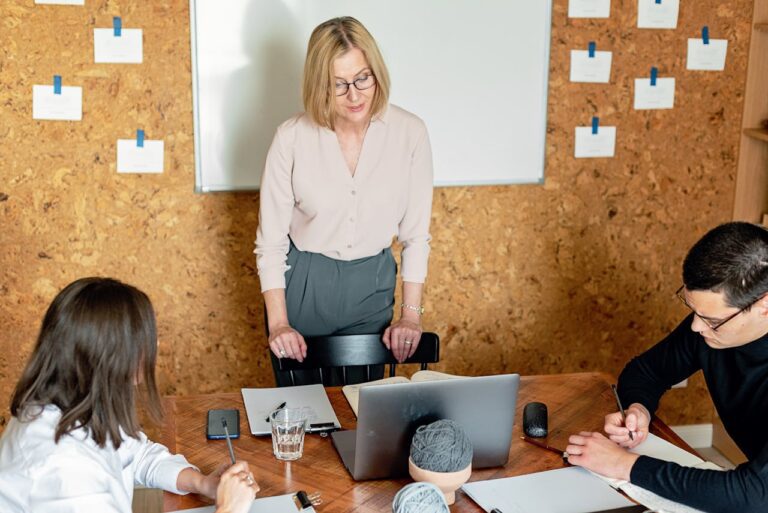Conditioned thinking is the mental pattern we develop over time based on repeated exposure to certain beliefs or behaviors. Just like any habit, it shapes how we view the world, make decisions, and even manage our finances. For example, many of us are conditioned to think that retirement savings must be tied to traditional methods like 401(k)s or stocks, even though these strategies may not always serve our best interests. This type of thinking can limit our potential, especially when it comes to wealth-building and financial security.
At Paradigm Life, we believe in breaking free from these conditioned financial strategies. By utilizing innovative approaches like The Perpetual Wealth Strategy™, which combines life insurance with investment diversification, we empower individuals to build long-term wealth outside the confines of traditional financial thinking. Understanding conditioned thinking and how it shapes your financial decisions is the first step to taking control of your future and achieving true financial independence.
The Dangers of Following Conditioned Thinking in Retirement Planning
When it comes to retirement planning, many individuals follow traditional advice without questioning whether it truly works in today’s fast-changing financial world. This is where conditioned thinking comes into play. Over time, people are taught to rely on 401(k)s, IRAs, and other traditional investment options, but these strategies may not be the best fit for building long-term wealth in the current economy. Let’s explore why following conditioned thinking in retirement planning can put your financial future at risk and how Paradigm Life offers an alternative.
The Myth of “Safe” Retirement Accounts
Over Reliance on 401(k)s and IRAs
Many people believe that 401(k)s and IRAs are the only safe and reliable ways to save for retirement. However, these traditional retirement accounts are conditioned financial products that can restrict your ability to grow wealth and manage your money effectively.
401(k)s are often tied to the stock market, and market volatility can drastically affect the amount of money you accumulate for retirement. As the market fluctuates, your retirement savings could experience significant gains or, conversely, steep losses.
Mismatch with Today’s Economy
The world today is vastly different from when 401(k)s and IRAs were first introduced. Today’s economy is more uncertain, with interest rates, inflation, and market swings creating instability in the traditional retirement planning model.
As economic volatility increases, relying solely on these “safe” retirement accounts becomes a risk. In fact, the market can quickly shift, leaving you with fewer options when it’s time to access your savings.
The Risk of Losing Financial Control
Relying on Third-Party Institutions
Conditioned thinking often leads us to trust third-party institutions like banks, Wall Street, and insurance companies with our investment returns. While they may offer convenience, they come with a loss of control.
When you rely on these institutions, you’re essentially handing over the reins of your financial future. These institutions make important decisions about your money, and you’re left with limited flexibility and control over how your savings are managed.
Limited Access to Liquidity and Wealth-Building Opportunities
Traditional retirement accounts often come with penalties or restrictions that make it hard to access your funds before retirement age. This lack of liquidity means that, if an emergency or opportunity arises, you may not be able to use your savings.
Wealth-building opportunities—such as real estate investments, business ventures, or other avenues for financial growth—are also restricted by traditional retirement accounts. This lack of flexibility can limit your ability to grow wealth beyond the narrow confines of the stock market or standard retirement plans.
Real-World Examples of Conditioned Thinking in Action
In our daily lives, we’re often shaped by conditioned thinking—beliefs and ideas we’ve heard repeatedly. These beliefs influence how we make financial decisions, sometimes without even realizing it. Below are two examples that show how conditioned thinking affects our choices and how using smarter strategies, like The Perpetual Wealth Strategy™, can lead to better results.
The 401(k) vs. Whole Life Insurance
1. Conditioned Thinking: The 401(k) Path
Mary follows the traditional advice: put as much money as possible into her 401(k) for retirement. She believes it’s the best way to save. For years, she contributed to her 401(k), relying on stocks and mutual funds to grow her wealth. While the account grows, it’s limited by market volatility, and she faces penalties if she tries to access her funds early.
2. The Whole Life Insurance Approach
John, however, chooses to invest in life insurance through The Perpetual Wealth Strategy™. Instead of relying on the stock market, he uses whole life insurance to create tax-deferred growth, liquidity, and more control over his retirement funds. John can access the cash value of his policy at any time, with no penalties. Even better, his policy continues to grow as if he never borrowed the money.
3. The Difference in Results
Mary’s wealth is tied to market risk, and accessing her money early is difficult without penalties. John, by embracing life insurance as an asset, has more control over his wealth. His money grows more securely and predictably, and he can easily access funds for emergencies or investment opportunities, such as buying a house or starting a business.
4. Key Takeaway
The difference is in control and accessibility. While conditioned thinking leads many toward conventional retirement accounts, there are smarter, more flexible ways to build wealth and achieve financial freedom—without being tied to the stock market’s ups and downs.
The Impact of Debt and Wealth-Building Opportunities
1. Conditioned Thinking: “Debt is Bad”
Samantha has always been told that debt is bad. She believes the best way to stay financially healthy is to avoid it. As a result, she avoids taking on any debt, even when it could help her grow her wealth. She focuses solely on saving, putting money into low-interest accounts and her 401(k). But this means she misses opportunities like investing in real estate or starting a business, which could build wealth much faster.
2. Paradigm Life’s Approach: Using Debt Strategically
Mark thinks differently. He doesn’t fear debt. Instead, he uses life insurance to borrow money at low interest rates for investments. Mark uses a policy loan to buy a rental property. As the property appreciates, his wealth grows, and his life insurance policy continues to grow as well, giving him access to more funds for future investments.
3. The Difference in Results
Samantha sticks to the safe but limited approach, avoiding debt and missing out on wealth-building opportunities. Mark, by thinking outside the box, uses debt strategically to create wealth. His real estate investment generates a return far greater than the interest he paid on his life insurance loan, and his policy keeps growing.
4. Key Takeaway
Conditioned thinking tells us that debt is always bad. However, using debt strategically can open up more opportunities for wealth-building. By leveraging life insurance and policy loans, you can use other people’s money to grow your wealth while maintaining control over your financial future.
How Conditioned Thinking Prevents People from Adapting to Change
Conditioned thinking often holds people back from adapting to new opportunities or embracing unconventional strategies. Many individuals follow traditional financial systems without realizing that these methods may not be the most effective way to build long-term wealth. Conditioned beliefs shape our decisions and make it difficult to break free from familiar, but outdated, financial practices.
Let’s explore how conditioned thinking keeps people stuck in their ways, how others have broken free to achieve greater financial success, and why financial education is the key to overcoming these limitations.
The Fear of Unconventional Strategies
Sticking to the status quo
- Conditioned thinking makes people believe that traditional financial systems—like relying on 401(k)s, IRAs, or the stock market—are the only safe options for building wealth.
- Fear of the unknown keeps people from considering alternative financial strategies like life insurance or investment diversification. These methods may feel unfamiliar or risky, even though they can offer greater control, liquidity, and tax advantages.
- Conditioned thinking leads many to believe that debt is always bad, even though strategic use of debt, such as borrowing against life insurance policies, can actually accelerate wealth creation.
Why this fear holds us back
- Many people are afraid to try something new, even when conditioned thinking tells them that traditional strategies aren’t working. They hesitate because they have been taught for years that the stock market and retirement accounts are the only trustworthy paths.
- The fear of unconventional strategies can make you miss out on better opportunities, leaving you stuck in a cycle of low returns and limited control.
The Importance of Financial Education
- Financial education is the key to recognizing and overcoming conditioned thinking. Understanding how different financial strategies work allows you to make informed decisions and create a financial plan that works for you, not against you.
- When you’re educated about life insurance, investment diversification, and other non-traditional financial tools, you’ll feel more confident in making decisions that challenge the status quo and offer better opportunities for growth and security.
The Path Forward: Breaking Free from Conditioned Thinking
Conditioned thinking has a powerful influence on how we approach finances. Over time, we are taught certain beliefs—like the idea that the only way to grow wealth is through 401(k)s, stock market investments, and traditional retirement accounts. But conditioned thinking can limit our opportunities and prevent us from exploring better financial strategies. Now is the time to challenge those beliefs and take control of your financial future.
In this section, we’ll show you how to break free from conditioned thinking and create a flexible, proactive wealth-building plan that works for you. We’ll also explain how life insurance can help you achieve financial freedom and security as part of The Perpetual Wealth Strategy™.
Challenge Your Financial Beliefs
The first step to breaking free from conditioned thinking is to question the financial advice you’ve been following. Ask yourself:
- Are traditional financial systems, like 401(k)s, really the best option for growing wealth in today’s world?
- Why are life insurance and other alternative investments not taught as wealth-building tools?
- Is it possible to build financial independence without relying on the stock market?
By actively questioning these beliefs, you can start to see that there are other smart and flexible ways to build wealth. One of the most powerful tools to help you break free from conditioned thinking is life insurance.
How Life Insurance Helps You Break Free:
- Growth: Your life insurance policy grows tax-deferred, meaning your money can accumulate without the tax burden, allowing it to grow faster than traditional savings accounts or stock investments.
- Security: Life insurance provides financial security for your family in case something happens to you, offering a guaranteed death benefit.
- Control: Unlike 401(k)s or IRAs, you have control over your money with life insurance. You can access your cash value whenever you need it, without penalties or waiting until retirement age.
By using life insurance as part of The Perpetual Wealth Strategy™, you gain more flexibility and control over your wealth-building process. It’s a strategy that doesn’t tie your financial future to the market’s ups and downs.
Taking Control of Your Financial Future
Once you start questioning conditioned thinking, it’s time for us at Paradigm Life to help you take control of your financial future. Learning about alternative strategies like The Perpetual Wealth Strategy™ will empower you to break free from the limits of traditional financial planning.
The Perpetual Wealth Strategy™
- What it is:
The Perpetual Wealth Strategy™ uses life insurance as a tool to create tax-deferred growth, while offering both liquidity and flexibility. This allows you to build long-term wealth without being tied to the unpredictable stock market.
- How it works:
By combining life insurance with other investments, such as real estate and business ventures, we can help you build a diversified portfolio that works for you. Unlike traditional retirement plans, The Perpetual Wealth Strategy™ enables you to take advantage of opportunities as they arise, without the financial restrictions and penalties that often come with conventional systems.
- Why it matters
Taking control of your financial future means no longer relying on third-party institutions like banks or Wall Street to manage your wealth. With The Perpetual Wealth Strategy™, we help you empower yourself to make decisions on your own terms, creating a strategy that is tailored specifically to your unique needs and financial goals. By breaking away from conditioned thinking and traditional methods, you’ll gain control over your wealth, security for the future, and the potential to create lasting prosperity.
Building a Resilient Portfolio
A resilient portfolio is one that’s designed to withstand market fluctuations and provide you with consistent growth. This means diversification is key. Rather than putting all your money into one asset or relying on a single investment strategy, you should spread out your risk and build a portfolio that works for you.
The importance of diversification:
- Diversifying your investments helps to ensure that your wealth isn’t tied to any one market or asset class. If one investment drops in value, others can help balance out the loss.
- Life insurance can be part of this strategy. It provides tax-deferred growth, liquidity, and access to funds when you need them, without penalties.
How Life Insurance, Real Estate, and Other Investments Work Together:
- Life insurance: Provides growth, security, and control over your wealth-building process.
- Real estate: Offers the potential for appreciation and cash flow through rental income, which can increase your overall portfolio value.
- Other investments: Diversifying into businesses, stocks, or bonds further reduces your exposure to risk and increases the opportunities for financial growth.
Together, these assets create a financial buffer—a safety net that allows you to weather economic changes and continue building your wealth, regardless of market conditions.
Key Takeaways:
- Conditioned thinking can limit your wealth-building potential. By challenging those beliefs and embracing new strategies like life insurance, you can create a more secure and flexible financial future.
- The Perpetual Wealth Strategy™ helps you take control of your finances by combining life insurance, real estate, and other investments for tax-deferred growth and liquidity.
- Diversifying your investments and focusing on long-term wealth-building strategies will give you the freedom and control to build a resilient portfolio that lasts.
Embrace Change for Financial Independence
Breaking free from conditioned thinking is the first step toward achieving financial independence. When we challenge the financial beliefs we’ve been conditioned to follow, we open ourselves up to new, more effective opportunities for wealth-building. Instead of being limited by outdated financial strategies, we can build a future where control, liquidity, and security are in our hands.
We’re here to help you break free from conditioned thinking and create a path to financial freedom. Schedule a consultation with a Paradigm Life Wealth Strategist today to discover how The Perpetual Wealth Strategy™ can help you build a customized wealth plan that works for you—free from limitations and full of opportunities.







